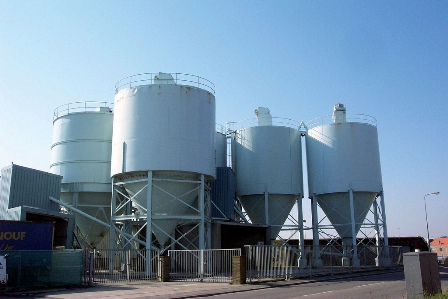
Avery Weigh-Tronix has launched a faster and more convenient method of calibrating silos and vessels mounted on load cells. Force calibration is faster than traditional methods as it causes minimal disruption and equipment downtime.
Traditional vessel and silo calibration involves one of two methods. Either more than 500Kg of weights are delivered to and then carried across the customer's site to the vessel; or the vessel is filled with a measured material using a flow meter to achieve a precise weight. Both of these options are disruptive and involve downtime since there are health and safety implications and ideally the container needs emptying before calibration.
Emptying the container is both time consuming and may involve safety procedures if it is full of volatile materials. The test cycle is also generally a long and labour intensive process since the engineer generally needs to hang the weights from the vessel structure or measure the added medium using a flow meter.
Force calibration uses hydraulic pressure instead of weights. There is also generally no need to empty the vessel, in fact Avery Weigh-Tronix can apply a force to the existing material to get an accurate calibration. The method involves applying force to the installed load cells and measuring that force with an independent set of high accuracy reference load cells.
The method is highly accurate, up to +/- 0.1 percent, and is traceable to UKAS/QSRMC.
There are three methods depending on the application and the ground clearance beneath the vessel or silos. These are push up, push down or pull down.
Using the push up method, jacks and reference load cells are placed beneath the existing vessel. The jacks then reduce the load on the vessel's load cells applying weight that can be measured by the reference load cells.
The push down method uses an H type bracket, which fits over the existing load cell mounting bracket. The jack and reference load cells are again used for measurement and calibration.
Finally, the pull down calibration uses hydraulic cylinders and reference load cells to accurately calibrate the silo or hopper. This negates the need to hang weights onto the vessel's structure and is quicker and easier to set up. Only small threaded bosses, or pull down points, need to be added to the support structure.
Says Maureen Bott, product manager for Avery Weigh-Tronix: "In today's economic climate it is even more vital that load cells are calibrated since accurate weighing of the customer's material is vital to keep control of costs. We have found inaccuracies of up to 5 percent on site, which can equate to large losses of valuable material. Force calibration causes minimal disruption, unlike more traditional methods. It is accurate, fast, causes minimum downtime and it is cost effective."